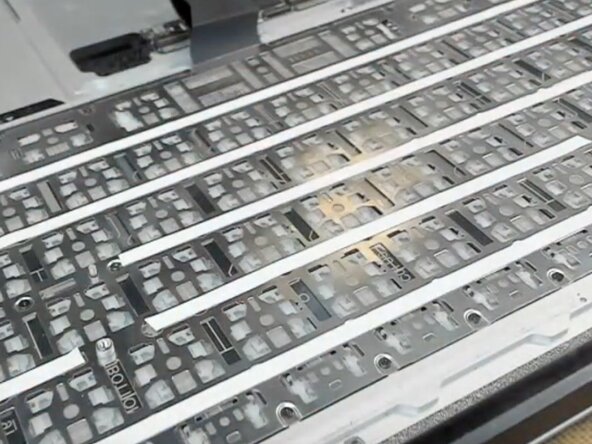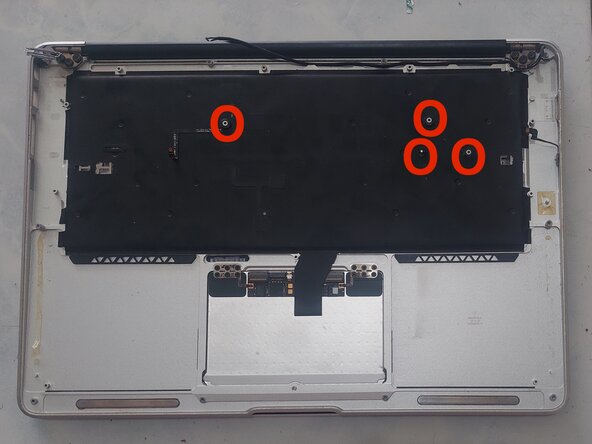crwdns2935425:07crwdne2935425:0






-
Once we are satisfied with the keyboards fit and there are no sticky keys, especially the top rows smaller function keys, as they are the ones that are most common to do so if ever, we can now prepare to install the old or a new backlight to the casing.
-
It is actually possible to change the color of your backlight at this stage by inserting a thin plastic covering layer between the backlight and the middle clear plastic. Colored bin liner (Trash can bags) work well as they are thin enough not to absolve to much light. Various colors are available at the local convenience store or supermarket.
-
Using the 3M tape carefully go around the edges where the old tape was leaving as less space as possible, this will help in case of any dirt, dust or worst case scenario of a water spill getting inside and onto the logic board, or at least it will help to minimize that risk.
-
A new backlight usually comes with adhesive tape preinstalled, if so there will be no need to use the 3M tape,
-
It is also possible to customize the backlight color by adding a thin layer of transparent colored plastic replacing the existing clear panel or overlaying it, this will work well as long as they are thin enough not to absolve to much light.
-
You can also apply the tape covering all the screws along the center rows, but do not peel back to expose the sticky surface otherwise you will have trouble positioning the backlight! This will just help to contain any screw that may decide to come lose and wedging itself under a key!
-
Gently put the backlight in its correct alignment and position, making sure that it is laying nicely flat and even, observing that the 4 alignment lugs or mounts for the logic board are not covered, then gently run your finger around the edges of the backlight pushing it down to firmly secure it to the case.
-
Once you are satisfied that everything is nice and secure, we are now ready to re-assemble the laptop. Job done.
crwdns2944171:0crwdnd2944171:0crwdnd2944171:0crwdnd2944171:0crwdne2944171:0